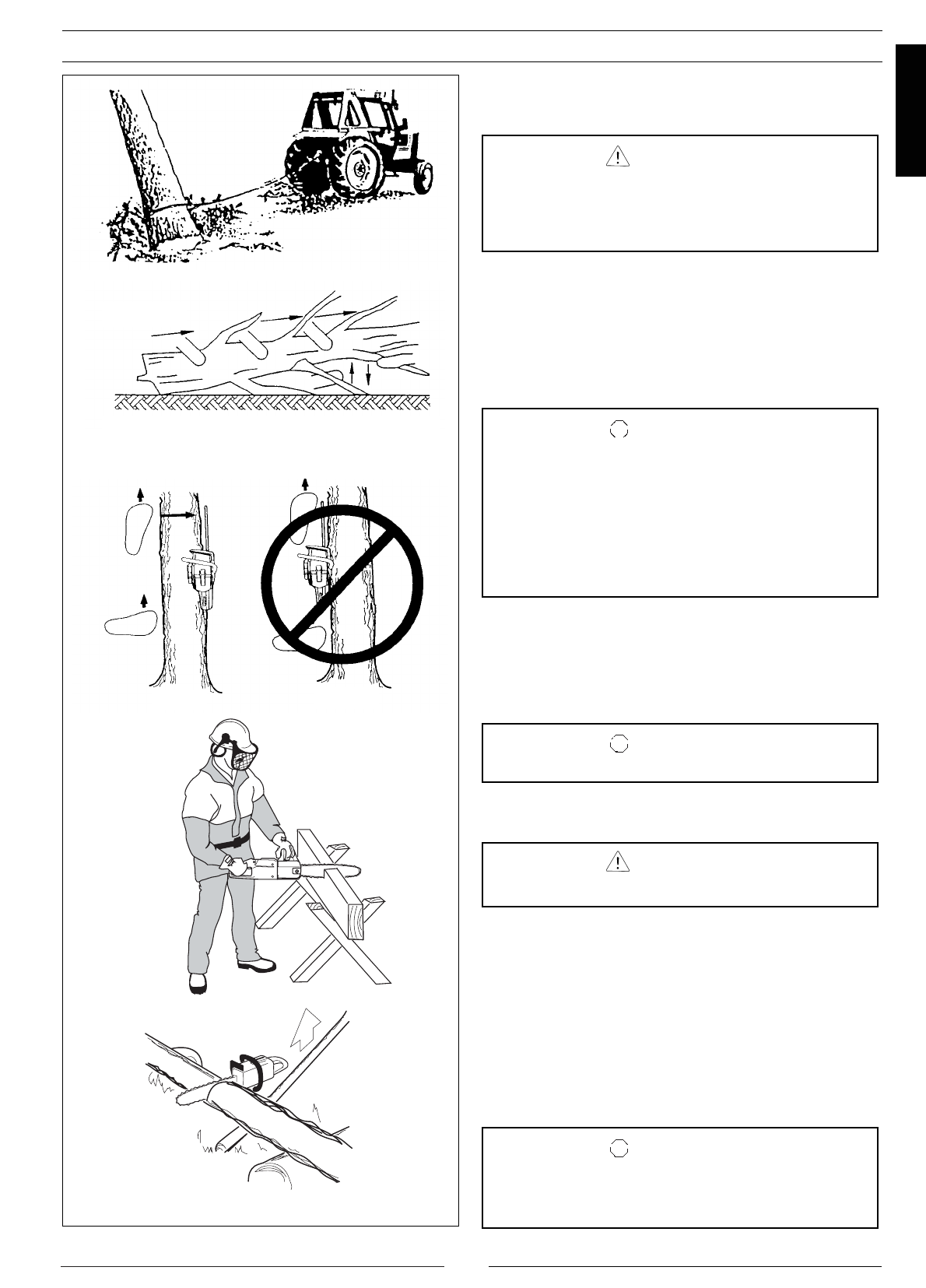
31
ENGLISH
Hang-Ups
Use a portable or tractor-mounted winch to pull the
tree down.
Limbing a tree
Limbing consists of removing the branches from a fallen
tree.
When limbing, leave larger, lower limbs to support the
log off the ground. Remove the small limbs in one cut as
illustrated. Branches under tension should be cut from
the botom up to avoid jamming the chain saw.
1. Stand on the left side of the trunk.
2. Maintain a secure footing resting the saw on the
trunk.
3. Maintain full control by holding saw close to you.
4. Move only when the trunk is between you and the
chain as shown.
Cutting logs or wood.
Support logs on other logs, or wood on a sawhorse or
equivalent. Never cut through a piece of wood that is
lying on the ground. Contact with sand, stone or soil will
blunt cutting edges.
If the saw jams.
Stop the motor.
Raise the log or change its position using a thick branch
or pole as a lever.
CAUTION!
Do not abandon a leaning, hung or lodged tree.
Such trees are a danger to other people and must be
taken down. Mark off the area if you have to leave in
order to obtain assistance.
WARNING!
A majority of kickback accidents occur during limbing
operations. Do not engage the guide bar’s kickback
zone. Take great care to avoid contact between the
nose of the guide bar and the log, limbs or other
objects.
Be extremely cautious of limbs under tension.
They can spring back toward you and cause loss of
control and injury.
STOP
WARNING!
Keep well away from chain.
STOP
CAUTION!
Watch out for springback from limbs under tension.
WARNING!
Do not try to pull the saw free. If you do, you can
deform the handle or be injured by the saw chain if
the saw is suddenly released.
STOP
LIMB CUT
KEEP WORK OFF GROUND
LEAVE SUPPORT LIMBS UNTIL LOG IS CUT
RIGHT
WRONG
Basic Working Techniques


















